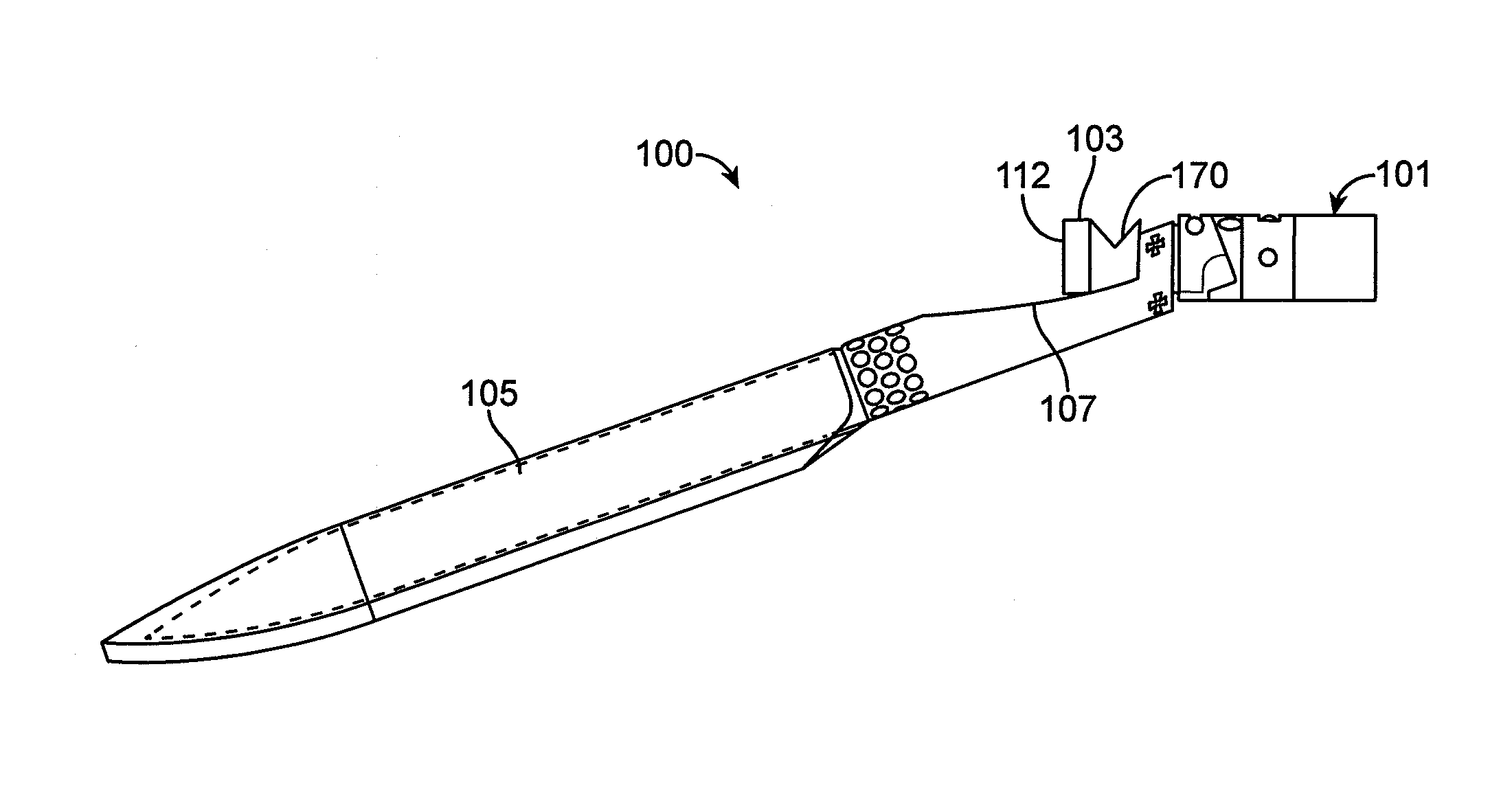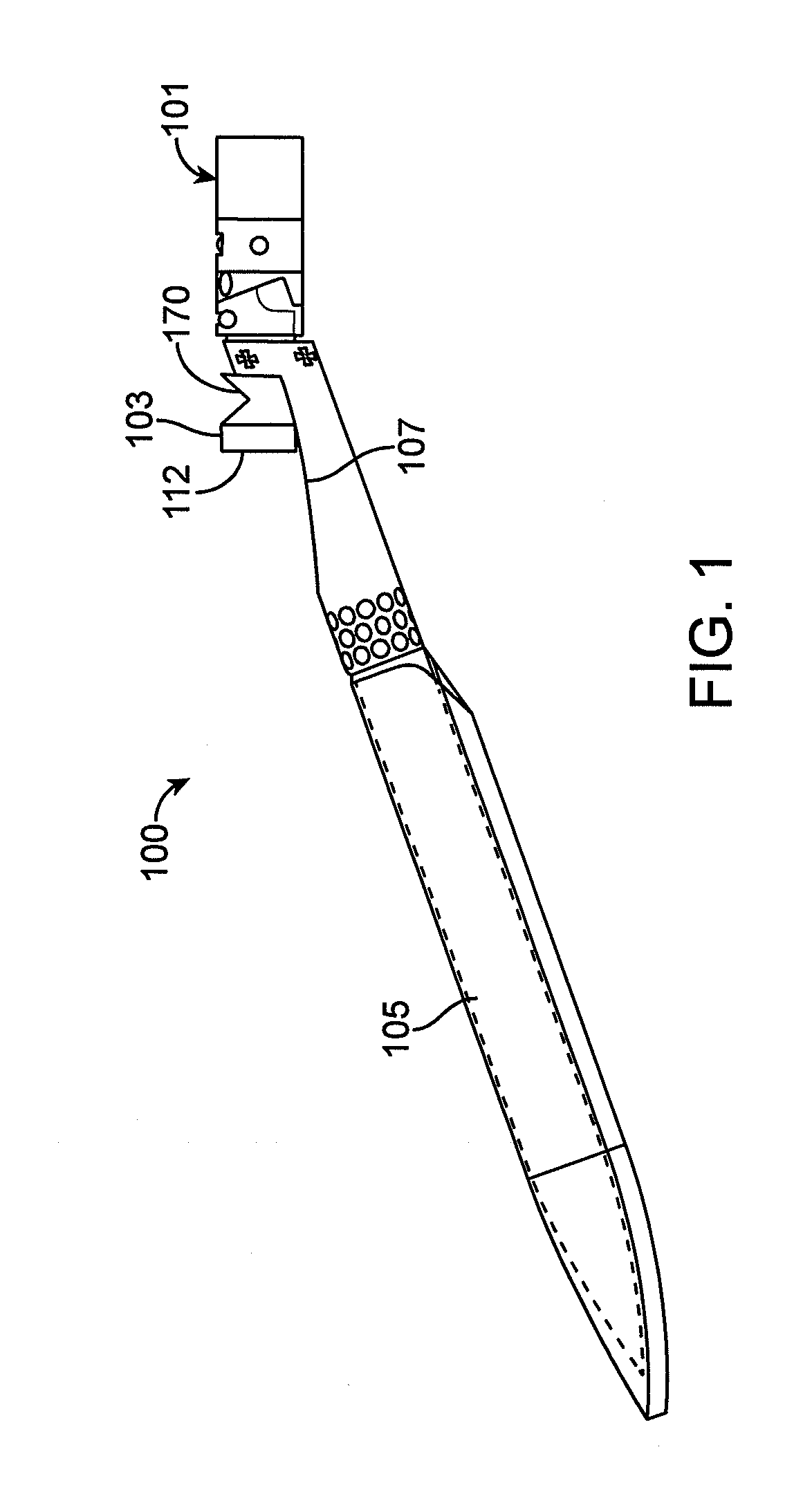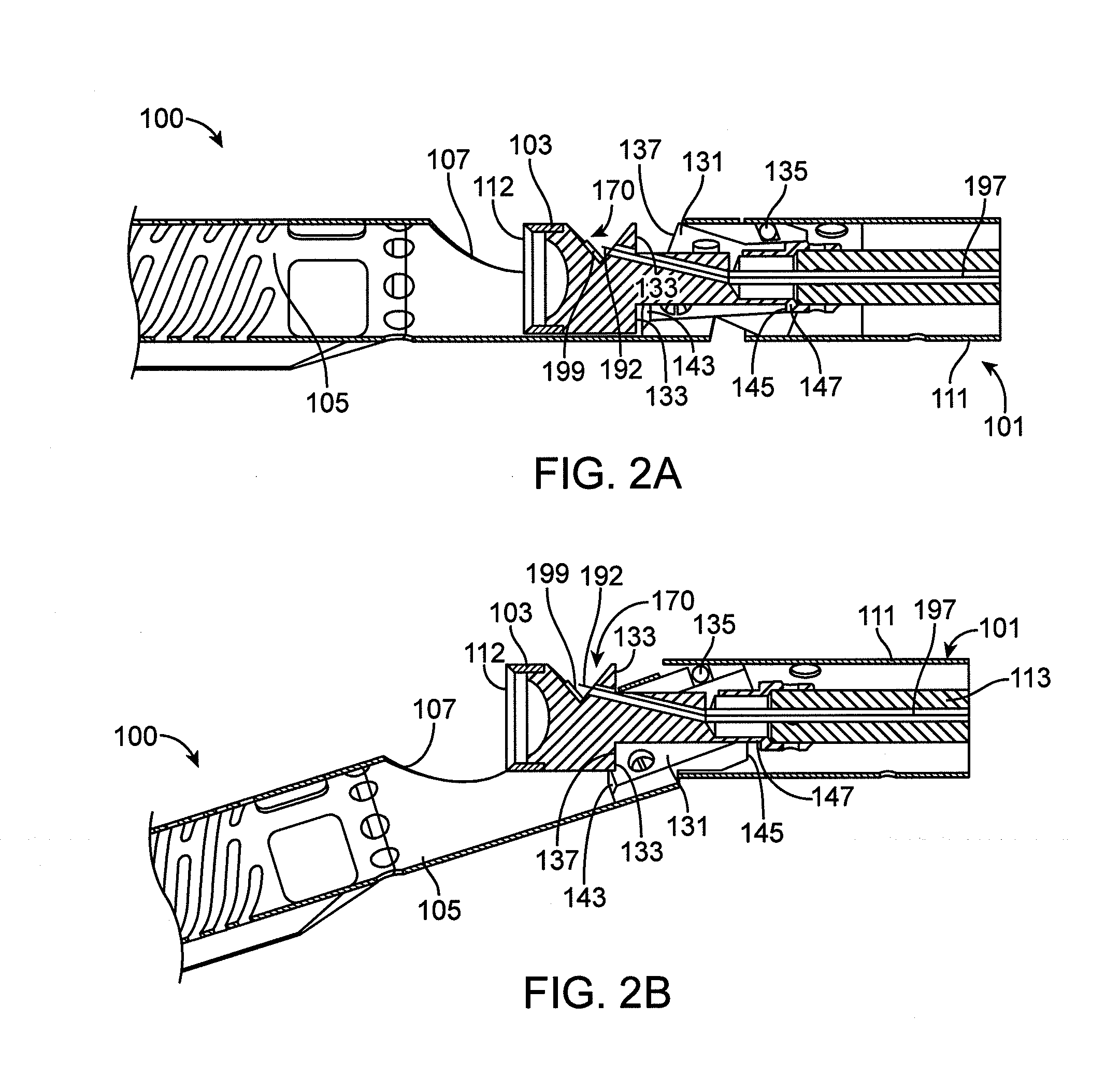Atherectomy catheters with imaging
a catheter and atherectomy technology, applied in the field of atherectomy catheters with imaging, can solve the problems of low efficiency, low luminal gain, and low efficiency of current devices
- Summary
- Abstract
- Description
- Claims
- Application Information
AI Technical Summary
Benefits of technology
Problems solved by technology
Method used
Image
Examples
Embodiment Construction
[0033]Described herein are variations of atherectomy devices having imaging capabilities. In general, the atherectomy devices include an elongate flexible catheter body and an annular rotatable cutter configured to rotate to shear tissue away from the vessel wall. In other embodiments, rather than having an annular cutter, the atherectomy catheter can include a distal tip having a proximal-facing cutting edge configured to scrape tissue away from the vessel wall.
[0034]The atherectomy devices can further include on-board imaging, such as optical coherence tomography imaging. The optical fiber for the OCT imaging can, for example, extend substantially on-axis with the catheter body. In some embodiments, the optical fiber can be attached to the rotatable cutter and configured to rotate therewith. In other embodiments, the optical fiber can be attached to a separate imaging shaft.
[0035]In some embodiments, the atherectomy catheters described herein can include a nosecone that deflects t...
PUM
 Login to View More
Login to View More Abstract
Description
Claims
Application Information
 Login to View More
Login to View More - R&D
- Intellectual Property
- Life Sciences
- Materials
- Tech Scout
- Unparalleled Data Quality
- Higher Quality Content
- 60% Fewer Hallucinations
Browse by: Latest US Patents, China's latest patents, Technical Efficacy Thesaurus, Application Domain, Technology Topic, Popular Technical Reports.
© 2025 PatSnap. All rights reserved.Legal|Privacy policy|Modern Slavery Act Transparency Statement|Sitemap|About US| Contact US: help@patsnap.com



